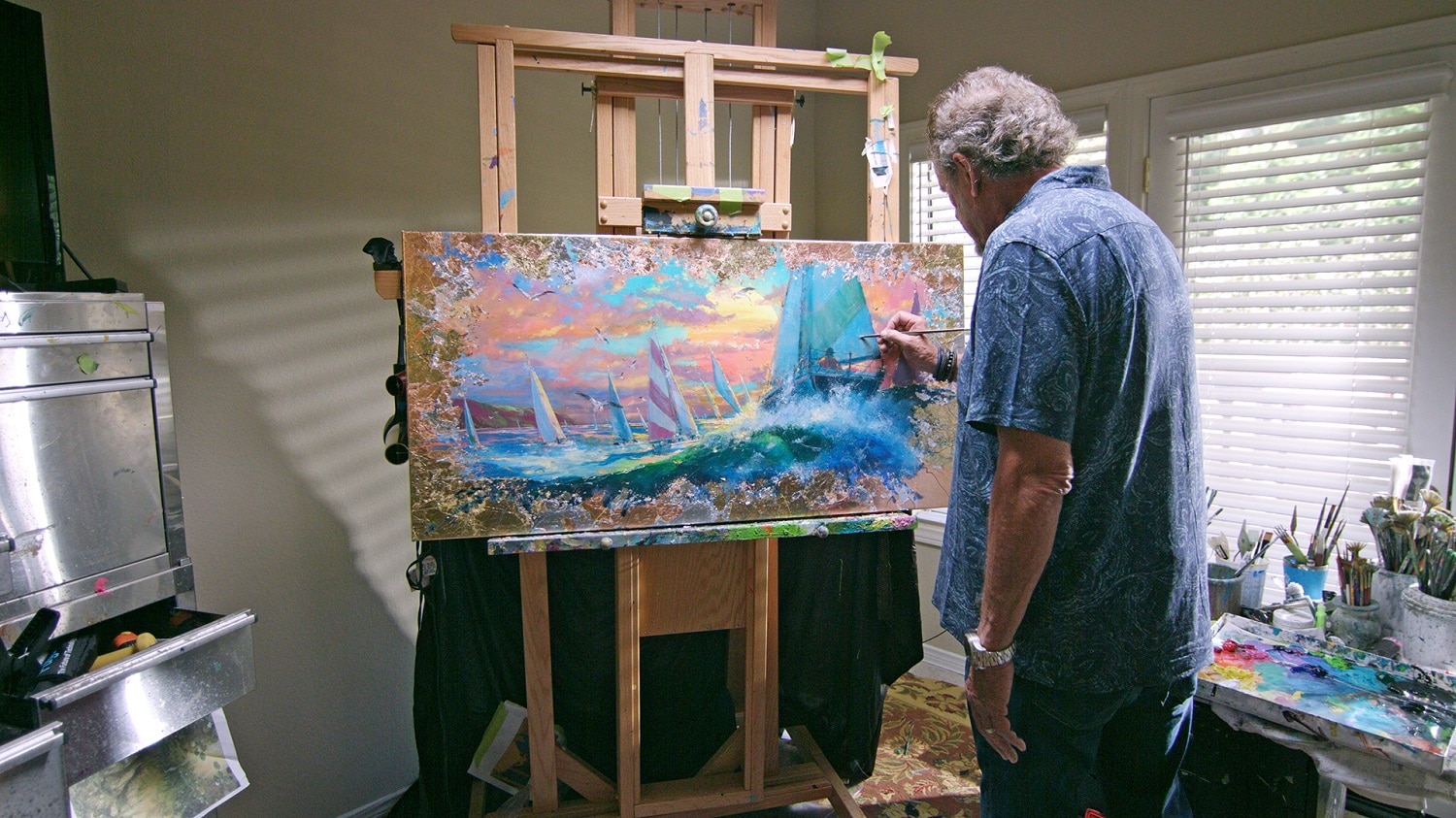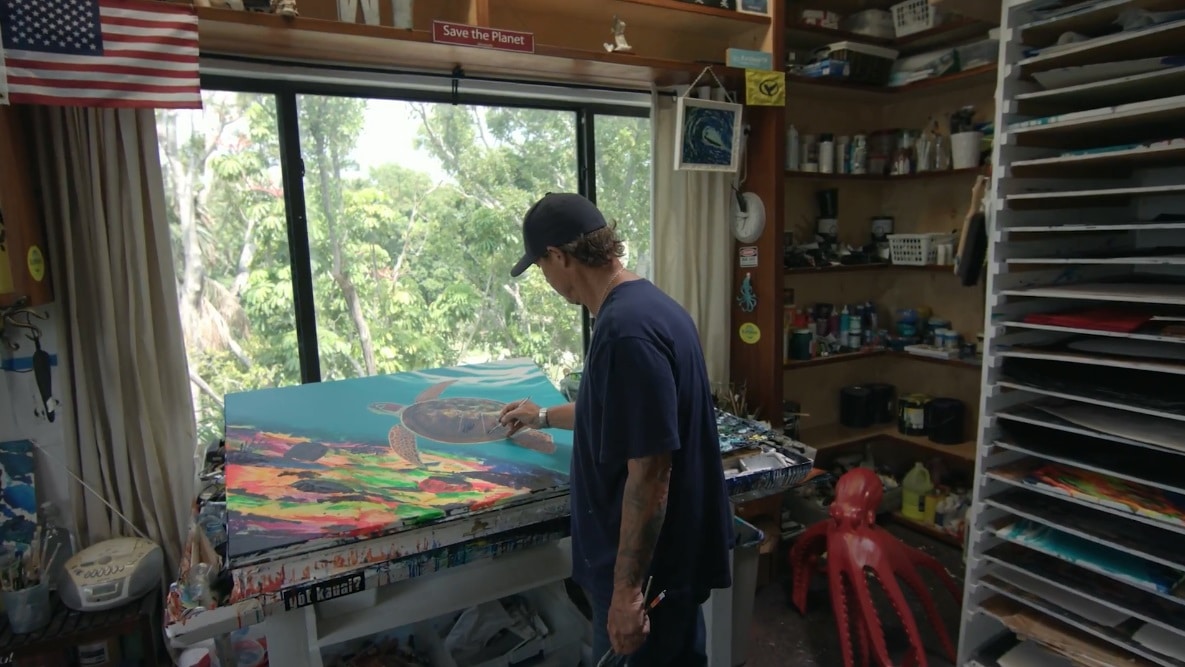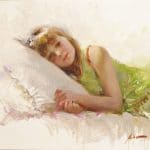10 Contemporary Artists on Their Creative Process

Duaiv
“How do you create a work of art?”
That sounds like a straightforward question, but it has millions of potential answers. Every artist in the world has their own creative process when they approach a blank canvas. Some come prepared with sketches and outlines. Others wait for a spark of inspiration until the last minute.
They’re all performing similar actions—painting, drawing, etching, sculpting—but it’s the subtle variations in how they perform each one that really defines them as an artist.
At Park West, we love “talking shop” with our artists, particularly about their creative process, because it varies so wildly from artist to artist.
If you’ve ever wondered how an artist can start with nothing and end up with a stunning work of art, here are 10 of our favorite artists talking about their creative process.
DUAIV
When I start a painting, there are no rules. Sometimes, I know what I am going to do. Sometimes, I don’t know what I’m going to do. I paint always without pictures. I do everything by memory. I don’t like to draw, so I put my oil on the canvas. You surprise yourself. You don’t know where you are going.
TIM YANKE
My approach to painting is to maintain spontaneity. There is life in movement, death in stagnation. And I approach every painting with the idea that I want that painting to continuously move—whether it’s your eyes around the painting or the emotions you have with the painting. I want that painting to come to life.
DAVID “LEBO” LE BATARD
My process in creating artwork—it starts very simply—is through drawing. I do a lot of sketches, I do a lot of reference work and gather a lot of source material. I start with a lot of pencil sketches and, from there, try to create a sort of creative flow.
JAMES COLEMAN
When someone sees one of my paintings, I want them to really feel the place that I’m depicting. And so my desire is that they’re going to want to travel into that painting and become part of it. …
Painting, for me, is an intuitive creative process, and so I let the canvas tell me where to go, and the paint and the canvas and me create a piece of art that people will enjoy.
ALEXANDRE RENOIR
I use palette knives because for me it adds a dimension to the painting. There is that thickness, that working in the flow of the paint, that it casts its own shadow. I make my own knives. I buy every knife I can find.
I’ve got so many that I’ll never use, but they all give me these ideas, these urges to try things and to experiment, and that’s all it’s really about.
ROMERO BRITTO
People tell me that my style is Pop art. Some people say that it’s a “Britto style.” I’m just like, “I paint and that’s what I do.” I let the critics and I let the experts in the arts say whatever they want. But, at the end of the day, I just paint.
YUVAL WOLFSON
For me, the best situation is to sit in front of a blank canvas. Sometimes, I have an idea how to begin. Sometimes, I don’t need an idea. I just touch the canvas with a brush and something goes on it and it starts. …
When other people look at my paintings, I want them to feel part of the story, part of the creative process, something new. Not like they’re taking home something finished. They just began.
WYLAND
When I’m painting a mural, it’s exactly like I’m painting a canvas. I cover the entire background with color, and it’s kind of like a Polaroid photograph where you see this mass of color slowly coming into sharp focus until you do the final details, highlights, shadows.
What I’m trying to create is a three-dimensional experience. But art, like music, is a feeling, and all the great artists have that gift. That’s what I’m trying to do in my art.
GUY HARVEY
The tools of my trade begin with pen and ink… very detailed work, both in cross-hatching and stippling. I still employ that technique today because it’s very effective. No matter what medium I’m using, it begins with the sketch.
I’ve got to get the proportions right, I’ve got to get the orientation right. To me, the most exciting parts of executing a painting are the beginning and the end.
DOMINIC PANGBORN
I had a professor who started out day one with: “Be yourself. You will never be Picasso, but then Picasso will never be you.”
Those words resonated into my life, my creativity. When I see others trying to emulate a style or technique or something else, they may be a master at it, but, to me, I’m myself and there’s only one of me.
If you are interested in collecting the works of any of these artists (and their amazing creative processes), register for our exciting online auctions or you can contact our gallery consultants at (800) 521-9654 ext. 4 or sales@parkwestgallery.com for information.
LEARN MORE ABOUT PARK WEST GALLERY ARTISTS:















